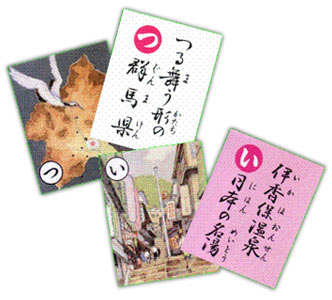The Japanese are good at coming up with innovative ways of committing information to memory. Like the man who memorized pi to 100,000 decimal places by using mnemonic hooks that made it easier for his brain to visualize each successive number. One tool used to teach local history in my home prefecture of Gunma is called Jomo Karuta. Here’s how it works: a deck of cards with a single hiragana character on each is laid out at random, while two or more children hover over the cards, ready to play. Using a second deck of cards, an adult reads historical phrases like “Gunma, in the shape of a crane in flight” or “Ikaho hot springs, famous bathing spot in Japan” and the kids try to grab the card that corresponds to that phrase. In addition to teaching kids about their prefecture’s history, the game strengthens family bonds, since my daughter’s mother and grandmother both played the same game. Japanese teach many subjects to kids using a variation of the karuta game system — there’s even a Queen’s Blade Karuta game on J-List now.

Jomo Karuta is a game for teaching local history.














